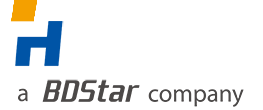

The demand for high-precision GNSS (Global Navigation Satellite System) positioning continues to grow across industries, such as geospatial surveying, precision agriculture, construction, and reference station networks. However, achieving centimeter-level accuracy is not only dependent on satellites and receivers—it also requires the right antenna technology. Among the most reliable solutions is the Choke Ring Antenna, a specialized antenna designed to minimize multipath interference and deliver highly stable performance in challenging environments.
This article explains what makes Choke Ring Antennas essential for high-precision GNSS systems, their working principle, key applications, and why industries rely on them to achieve uncompromising accuracy.
A Choke Ring Antenna is a type of high-performance GNSS antenna designed with a unique structure that consists of concentric metal rings placed around the antenna element. These rings act as a filter to suppress multipath signals—reflected signals that can distort positioning accuracy.
Key features of choke ring antennas include:
Multipath mitigation for improved signal quality.
Wideband reception supporting GPS, GLONASS, Galileo, BeiDou, and QZSS.
High phase center stability ensuring consistent accuracy.
Durability against environmental conditions like rain, snow, and temperature fluctuations.
This makes choke ring antennas the industry standard for reference stations, base stations, and precision GNSS applications.
In GNSS applications, multipath interference occurs when signals bounce off nearby objects like buildings, vehicles, or the ground surface before reaching the antenna. These delayed signals can cause errors in the calculated position.
For everyday navigation systems, small positioning errors may be acceptable. But for applications requiring centimeter or millimeter accuracy, multipath interference becomes a serious challenge.
This is where the choke ring antenna design excels, as the concentric rings absorb or deflect unwanted reflected signals, allowing only the direct satellite signals to be processed by the receiver.
Choke ring antennas are the backbone of Continuously Operating Reference Station (CORS) networks. They ensure the stability and integrity of GNSS correction data, supporting RTK (Real-Time Kinematic) and PPP (Precise Point Positioning) solutions used globally.
Surveyors rely on choke ring antennas for geodetic measurements and mapping, where centimeter-level precision is required. The multipath suppression capability provides greater confidence in datasets collected in urban or obstructed environments.
Modern agriculture depends on GNSS-guided tractors, drones, and harvesters for automated operations. Choke ring antennas enhance the reliability of correction signals, ensuring accuracy in planting, spraying, and harvesting.
For large-scale projects such as bridges, dams, and railways, GNSS choke ring antennas are used in monitoring systems to detect shifts or movements with millimeter-level precision.
In applications like tectonic plate monitoring, atmospheric studies, and seismic research, choke ring antennas provide stable data over long periods, making them a trusted tool for scientists worldwide.

Advantages of Choke Ring Antennas
The adoption of choke ring antennas in GNSS systems is driven by several technical advantages:
Unmatched multipath suppression – critical in urban, mountainous, and reflective environments.
Support for multi-frequency GNSS – enabling greater accuracy and redundancy.
Superior phase center stability – reducing positioning errors.
Long-term reliability – designed for outdoor installations and harsh conditions.
These benefits make choke ring antennas indispensable for applications where accuracy and reliability cannot be compromised.
At Harxon, we deliver advanced choke ring antenna solutions designed for CORS networks, geodetic surveying, precision agriculture, and reference station deployments. Our antennas are engineered with:
High-gain, low-noise designs for exceptional signal reception.
Multi-constellation and multi-frequency support to ensure compatibility with all GNSS systems.
Rugged construction for durability in extreme environmental conditions.
Consistent phase center accuracy, enabling reliable long-term data collection.
By integrating Harxon's choke ring antennas into GNSS systems, our partners achieve superior accuracy, stability, and performance in mission-critical applications.
For industries where positioning accuracy is mission-critical, the choke ring antenna is not just an option—it is a necessity. Its ability to suppress multipath interference, support multiple GNSS constellations, and deliver stable performance makes it the foundation of high-precision GNSS infrastructure worldwide.
At Harxon, we are committed to providing world-class choke ring antenna solutions that empower industries to achieve unmatched accuracy and reliability in their GNSS systems.